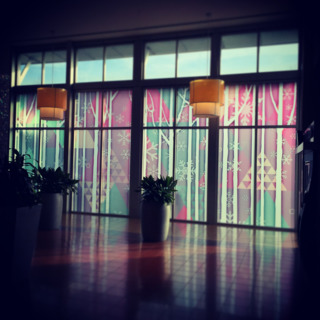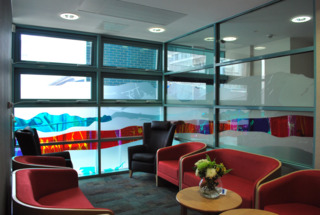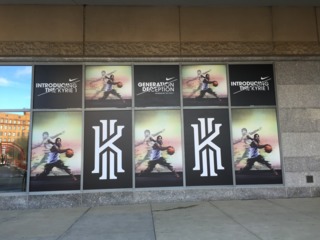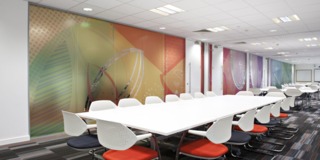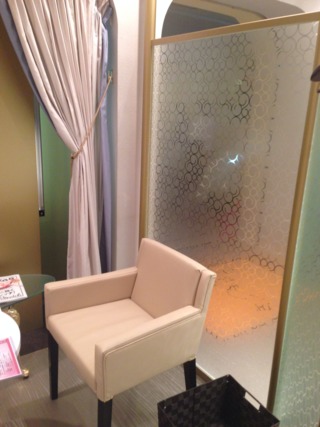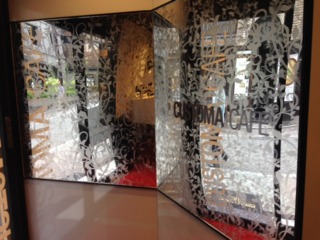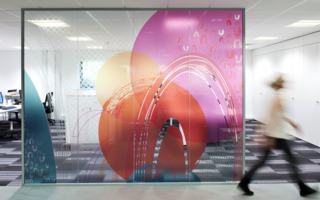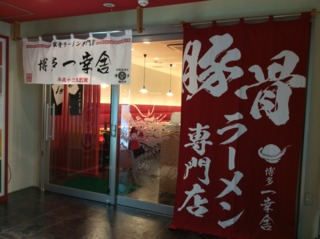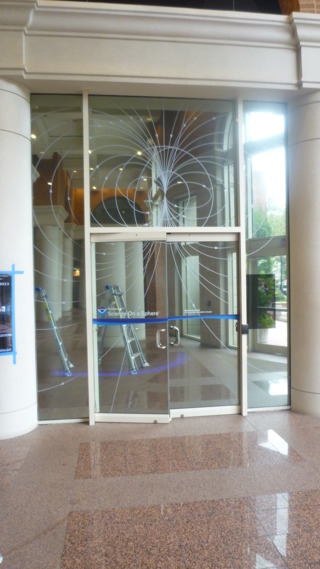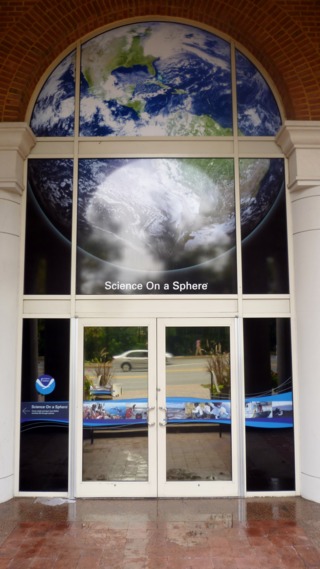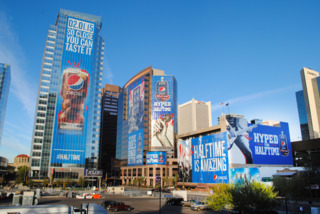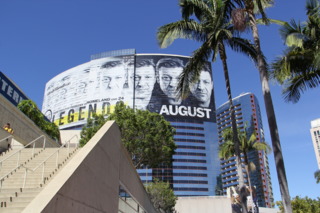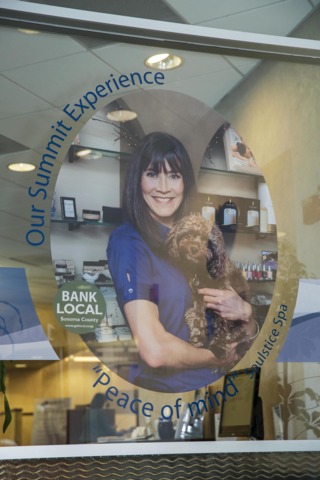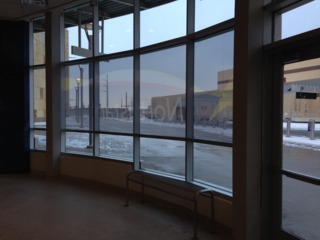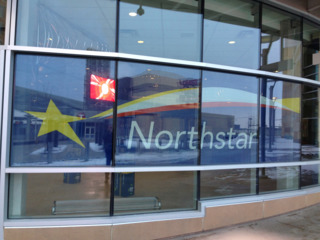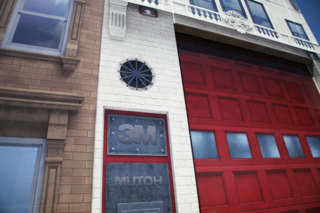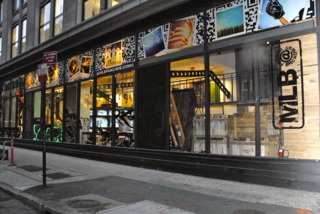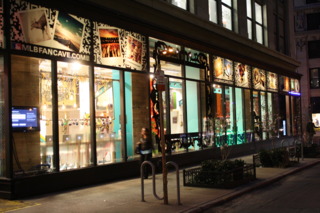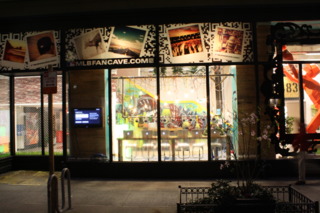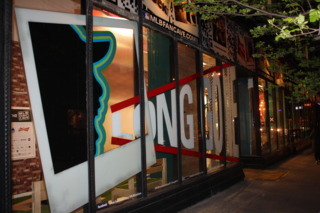Shining a Light on Window Graphics
What PSPs need to know about designing, printing and installing this technically-precise application.

Most print service providers (PSPs) are always looking for new applications they can market and sell to clients, especially if they can use the equipment and expertise they already have in house. One application that is often overlooked, however, is window graphics. While it has been around for quite some time, window graphics have been experiencing an upsurge in popularity in recent years, due in large part to an explosion of newer film technologies that make for brighter, longer-lasting images that are easier to install.
“The popularity of window graphics continues to grow as businesses seek imaginative ways to differentiate their products and services,” said Judy Bellah, public relations manager, Clear Focus Imaging Inc. “New print materials and technologies are expanding the range of possibilities.”
“Window graphics seem to be increasing in popularity,” agreed of Holly Coleman, market development manager with 3M's Commercial Solutions Division. “Shop owners are realizing the value of the underutilized window real estate and the power of using window graphics to upsell and diversify their business.”
“Window graphics have been gaining a lot of popularity over the past couple of years and this is due to the availability of multiple application formats and finishes,” noted Shereen Sammaa, senior product manager, Arlon. “You can now see window graphics being used for promotional purposes, innovative permanent signage, or for general décor purposes.”
But new films and better print technologies alone won’t bring the consumers knocking at the door. PSPs need to become more proactive about educating clients on the application. “Ten years ago, all you could do was print on vinyl,” noted Jim Halloran, Lintec of America’s vice president sales and marketing. “That was not a great idea—it shrinks in the heat and cracks in the cold. Now you have films that are optically clear, and if you print and install it right, looks like you printed on the glass. If a PSP wants to increase business, they should show what they can do with the technology today.”
Halloran went on to note that surprisingly, retail spaces aren’t the segment in the most demand right now—that honor belongs to office spaces. Conference rooms and office doors, along with glass partitions within the building are a profit center PSPs are starting to see pick up. Halloran notes that films that, when installed correctly, look like the image has been etched directly into the glass, along with the ease of being able to change brand messaging at will, are a big part of what is driving that space.
But don’t count retail out, either. “Educate their customers on the different types of effects and designs that are possible with window films,” said Coleman. “For example, window graphics can incorporate messaging on both sides, different opacities, perforated options to enable viewing from one side only, and more. Highlight the power of speaking to a captive audience; customers who are standing there right in front of store window.”
She also pointed out that PSPs can educate clients to think outside their own branding messages, as well. “In some cases, PSPs can remind customers that windows can be used as leased space—not all businesses have storefronts with access to customer traffic and may be willing to pay those that do for advertising space,” she noted.
“A major reason why the number of window graphic projects is low for most PSPs is due to lack of awareness about the possibilities of this media format,” said Sammaa. “Custom printed etched glass, one way window film and clear media may be common to our industry, but many customers are unaware that they exist. Accordingly, PSPs need to make sure that they are showcasing this effectively via case studies that show window graphic projects along with real life examples. These are both great ways to create demand.”
“One option is to create a small sample for a municipality or organization for free, with the PSP’s name on it. Install it in a visible place and see what happens. Look for opportunities for décor graphics with architects and interior designers,” suggested Jason Yard, Marketing Manager - Distribution Products for MACtac.
“Proactively recommend window graphics whenever they’re a good fit,” said Bellah. “Although window displays have become ubiquitous, ironically they are not always on a company’s radar when it comes time to commission signage. Virtually every window has promotional potential. Applications cover a wide gamut, from static-cling and pressure-sensitive-adhesive decals and small-format posters to full-coverage window graphics and vehicle wraps.”
Getting it Right
When it comes to print and installation, window graphics are not exactly the same as other applications. There are a few critical elements to keep in mind when designing, printing and installing window graphic applications.
First of all, keep in mind the size of the graphic to the space. “Trim away from the rubber molding of all window edges at least 1/8-inch to 1/4-inch,” said Yard. “Rubber can flex and expand, which can lift the edges of most vinyl media.”
Second, it’s important to know what kind of lighting the graphic will get, since that can have a massive impact on the viewability—and ultimately on the response. “Generally speaking, clear window films generally look better when backlighted,” noted Bellah. “Perforated, one-way-vision films require front lighting for optimum effect. In some cases, auxiliary flood lighting may be needed. Graphics printed on two-way-vision films remain visible under most lighting conditions.”
“Lighting is critical with window graphics—graphics may look washed out in bright sun,” noted Coleman. “Perforated window graphics may be less visible during dusk and dawn hours as lighting transitions; print density should be adjusted as needed. Consider the graphic design/message and day-part to make sure the message is visible to consumers during the desired time of day. For example, if you have a clear graphic on a window facing east with direct sunlight and are advertising morning coffee, you may get too much glare to see the message, and your promotion won't be as effective.”
Finally, installation is a critical element of the process. In fact, Halloran noted that often, installation is half the cost of the project, and it’s easy to eat up the profit margin by forcing the PSP to print and re-install several times before getting it right. “We had guys who are typically wrapping vans and buses, and they thought this was the same stuff. But it isn’t the same at all. They were botching jobs pretty badly.” His biggest piece of advice to PSPs is “Get it done professionally and know your installer very well.”
At the end of the day, however, window graphics are a great way for PSPs to expand their product lineup and showcase their experience with applications that take more finesse and skill than many other print projects. “Window graphics can be difficult when it comes to the actual ‘printing’ since they often demand a higher level of print quality,” noted Sammaa. “Most window graphics are stationary, at eye level and are seen up-close. This means people will inspect them more closely. In addition, printing on clear, perforated or transparent media takes more print expertise. Often times, media for these applications will not be universally printable and will need to be matched with the correct print system. In addition, color matching and color density can be difficult for less experienced printers. That being said, window graphics are great place for PSPs to showcase their print expertise.”

